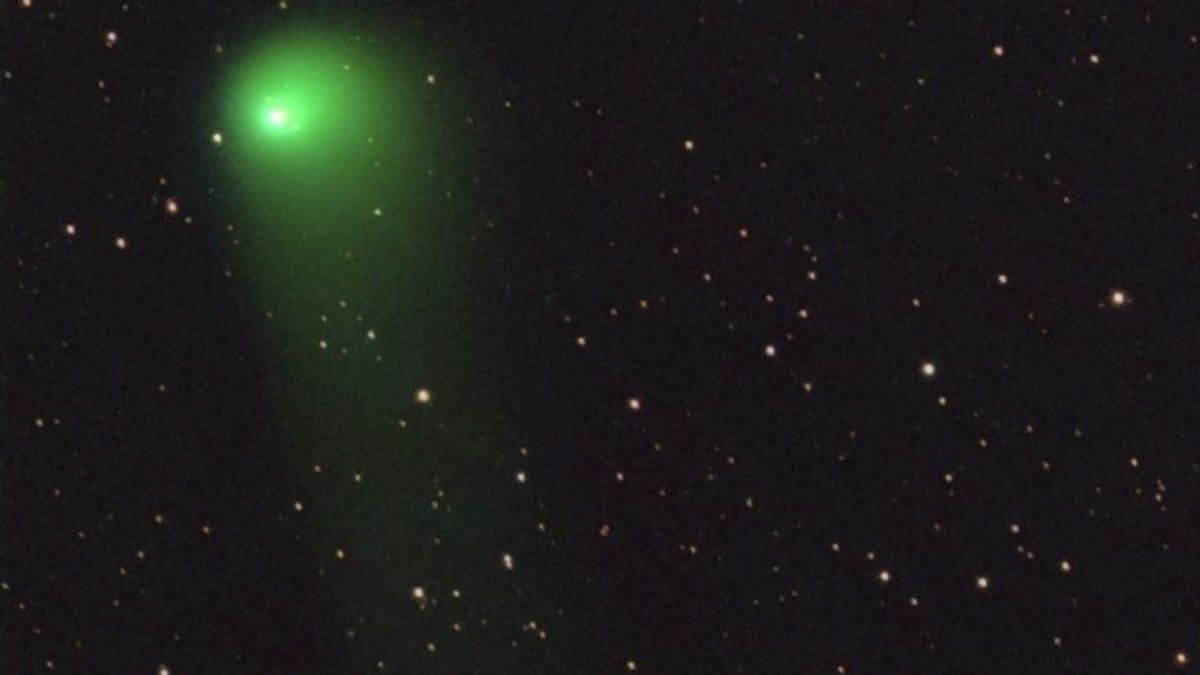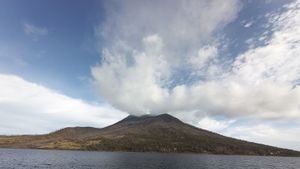
JAKARTA - National Research and Innovation Agency (BRIN) researcher, Abdul Rachman, who is also the Coordinator of the Kupang National Observatory Management Agency (BPON) said the rare phenomenon of Comet C/2017 K2 (PanSTARRS) or K2 is crossing the Earth, and has no impact.
"This comet passes closest to Earth on July 13, 2022, at a distance of about twice the distance from Earth to the Sun. Currently, K2 is heading for its closest distance to the Sun which is expected to occur in December this year", Abdul said in a press statement received in Jakarta, Antara. , Monday, July 25.
The phenomenon of celestial bodies such as comets crossing planet earth cannot be witnessed every time, but it takes a long time, even decades.
Comet K2 crossed Earth at a distance of more than 270 million kilometers so that it had no impact on Earth. Because it passes quite far from Earth, which is about twice the distance from the Sun to Earth, it does not cause negative effects.
K2 displays a dust tail and a gas tail as it makes its closest approach to Earth. The closer to the Sun, the gas tail will be more clearly visible.
When passing close to Earth, K2 can only be seen if you use a telescope, especially because it coincides with the full moon. However, as the comet gets closer to the Sun, K2 will be visible with binoculars.
Therefore, Abdul said that all regions on the earth's surface had the opportunity to see the comet on a clear night.
"We can observe K2 for several months, especially as the comet passes near Earth, on its way to its closest point to the Sun, and for several months after that", he said.
Because it is included in the non-periodic comet group, K2 does not routinely pass near Earth-like periodic comets such as Halley's Comet which has a period of about 83 years, so it is not known when Comet K2 will pass near Earth again.
Comet C/2017 K2 is thought to have originated from a location in the outer solar system called the Oort Cloud.
The initial C of the comet is non-periodic, the number 2017 indicates the year the comet was discovered, and the combination of letters and numbers K2 indicates the order in which it was discovered in 2017.
Abdul said K2 was discovered by a comet monitoring system called the Panoramic Survey Telescope and Rapid Response System (PanSTARRS) located in Hawaii on May 21, 2017.
Observations of Comet K2 at BPON were carried out at the Operational Office and Science Center in Oelnasi Village for several days from July 13 to July 16, 2022.
On each day of observation, the acquisition is carried out for several hours. The collected data can not only be analyzed for research purposes but can also be used for Astrophotography.
SEE ALSO:
"For observations used a telescope that uses a mirror measuring 25 cm and a CCD detector equipped with several color filters", he said.
The English, Chinese, Japanese, Arabic, and French versions are automatically generated by the AI. So there may still be inaccuracies in translating, please always see Indonesian as our main language. (system supported by DigitalSiber.id)














